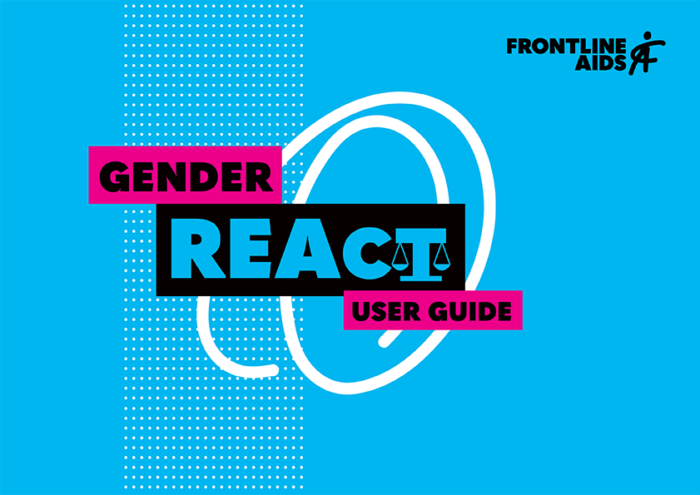Rights-Evidence-ACTion (REAct) is a system that helps organisations document and respond to human rights-related barriers that individuals experience in accessing HIV services.
Developed by Frontline AIDS, REAct enables organisations to record data about human rights violations experienced by individuals; provide and refer them to health, legal and other public services; and use this data to inform quality human rights-based HIV programming, policy and advocacy at national, regional and global levels.
Gender REAct is a supplementary module to REAct, which recognises a specific need to document gender-related human rights barriers to accessing health, HIV, violence response and other support services, especially in the wake of COVID-19. This should be used alongside REAct, to better document and respond to incidences of sexual and gender based violence.
REAct user guide

ENGLISH
FRANÇAIS
Arabic
This user guide is for all organisations interested in implementing a human rights documentation and monitoring system. It has been designed for three main types of users:
- Programme managers: To guide their decision-making as to the suitability of REAct for their context, and how to design a project with the involvement of the right stakeholders and the right resources.
- REAct trainers: Workshop materials and session instructions for individuals who will train the REActors (individuals directly responsible for implementing REAct by documenting, responding and analysing the data) with suggestions for how to deliver the training.
- REActors: Information and guidance for REActors to support them in implementing REAct.
What changes have we made to REAct and why?
Since its inception in 2013, REAct has grown in leaps and bounds. In 2018, the information management system (IMS) on which REAct was originally based – Martus – was phased out and we used this opportunity to improve and strengthen REAct. Read about the changes to REAct on page 11 of the REAct User Guide.
Gender REAct user guide

Gender REAct has been developed in response to compelling evidence that gender-related inequality is a major human rights barrier that prevents marginalised people from accessing HIV-related and other health services – especially to sexual and reproductive health (SRH) services – preventing those in most need from realising their sexual and reproductive rights.
Gender REAct provides a set of new tools to complement – and be used alongside – those in the original REAct User Guide. They enable REAct implementing organisations to monitor, document, gather data and respond to gender-based violence and other gender-related human rights violations.
ENGLISH
FRANÇAIS
Arabic
REAct resources
For more information, see our page about REAct.
This work has been possible with financial support from GIZ BACKUP Health.




